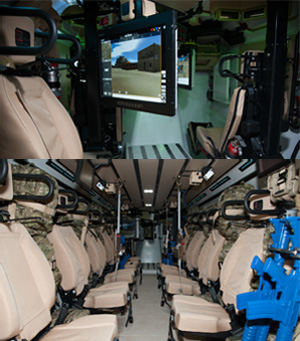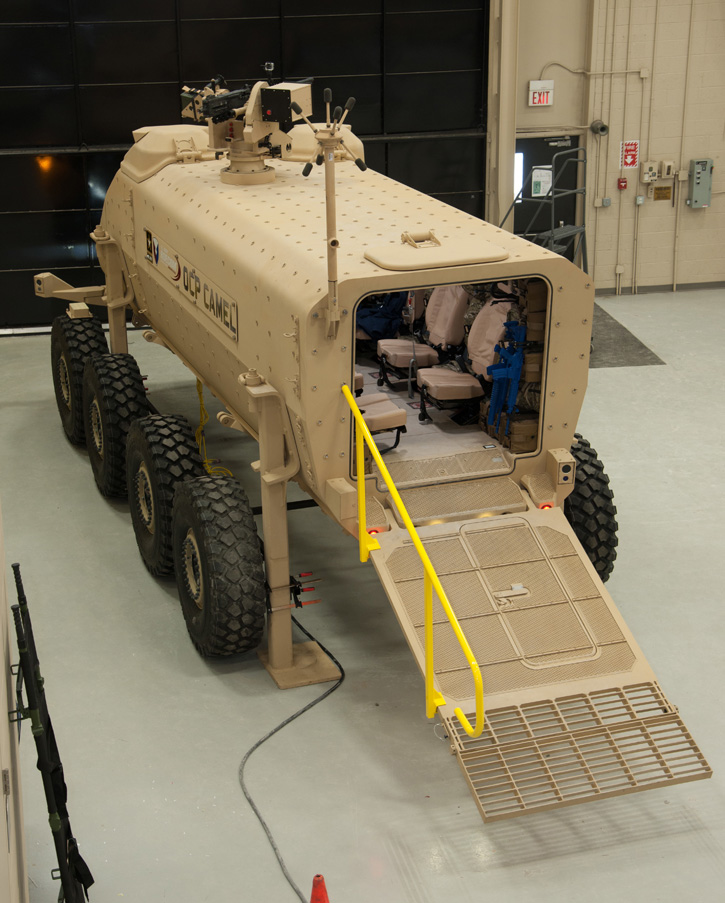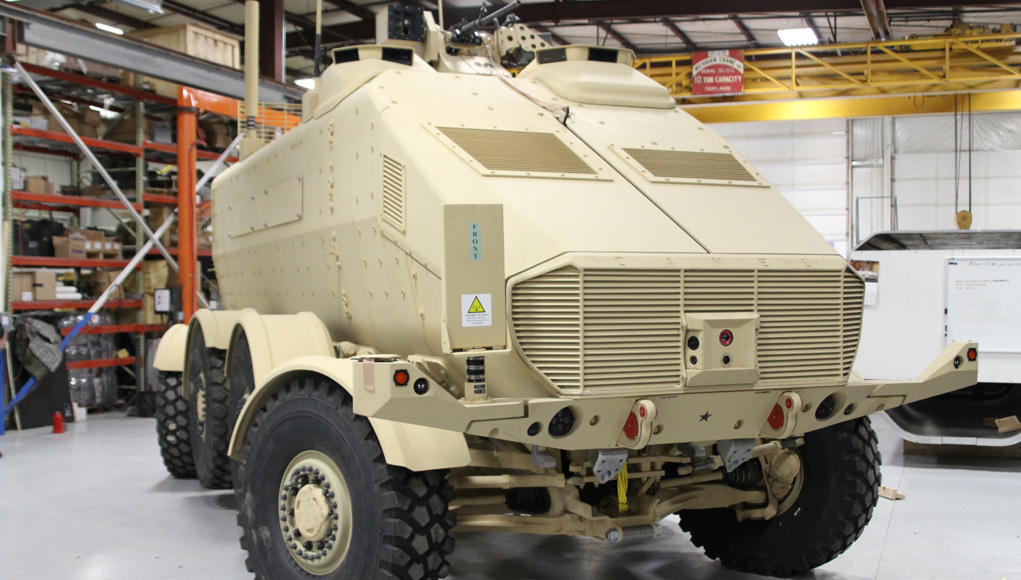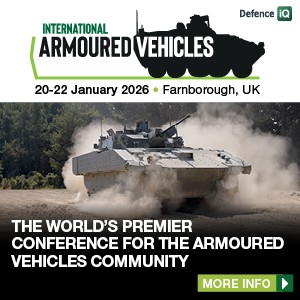The US Army presented today a new concept vehicle designed to explore how to design current and future combat vehicles to better protect the warfighters riding in those vehicles to combat. The Concept for Advanced Military Explosion-Mitigation Land (CAMEL) vehicle designed by the Tank Automotive Research, Development & Engineering Center (TARDEC), demonstrates the ‘Occupant Centric Platform’ (OCP) concepts developed at the center. A 30-ton 8×8-class troop carrier, CAMEL is designed to safely and securely transport nine troops and two crew-members safely and securely. The goal is to reduce combat vehicle casualties well below 50 percent, compared to current combat vehicles.
This CAMEL demonstrator is ergonomically designed around the Soldiers and their gear, incorporating cutting edge technologies to increase comfort and efficiency while improving soldier safety, by diverting blast energy away from its occupants. TARDEC recently evaluated the vehicle with fully equipped active-duty troops, to gather feedback from soldiers who would use such vehicles in the future. The demonstrator is undergoing tests, including live fire, that are designed to evaluate its safety, comfort and blast resistance.
“This is a new concept in that we are designing the vehicle around the soldier,” said Steve Knott, the Associate Director of Ground Systems Survivability at TARDEC. “There are a lot of vehicles that, when you get in the back, it is tight. There are protrusions that could cause injury and loose gear that can be harmful in certain situations. These OCP demonstrators are designed around the occupant and offer a new level of survivability for our warfighters”.
The OCP Technology Enabled Capability Demonstrator (TECD) program aims to reduce casualties on legacy platforms by as much as 50 percent, using OCP concepts. The ultimate goal is to eliminate crew injuries for any occupant position.
Blast protection is the basic consideration for the design of the hull, seating and ergonomics. Two primary factors contribute to the dissipation of blast effect caused by an underbelly explosion – the distance (height) from the source and the shape of the hull. An OCP-designed vehicle uses a U-shaped hull, with a deflector shield that channels shock waves away from the vehicle’s hull and interiors.

OCP-designed vehicles are equipped with individual seating, fitted with harness straps and foot rests – their role is to isolate the passenger from the blast affecting the hull, while maintaining comfortable and ergonomic design. Seat angles are designed and shaped to prevent spinal injuries, and the ceiling contains impact-absorbing materials to reduce the chance of head injury. The hull is designed with protective trim on the top and sides, also reducing the danger of injury. 360-degree views with cameras capturing the surroundings outside the vehicle and beaming the video onto internal screens provide situational awareness inside, without exposing the crew to hostile fire.
The fighting compartment can be reconfigured to provide space for stretchers, carrying injured squad members. The litters are designed specifically for the vehicle and hang from straps attached to hooks on ceiling-mounted anchor tracks to isolate the wounded from the floor (preventing further injury from blast).























